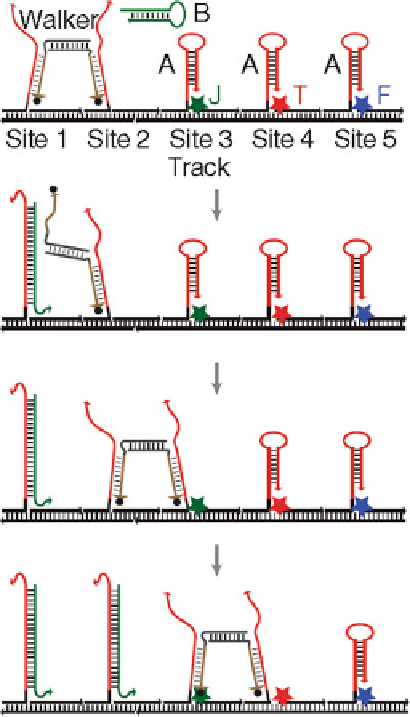Biomedical Engineering Reference
In-Depth Information
Fig. 12.3
Secondary
structure mechanism
depicting processive
locomotion (Reprinted with
permission from Macmillan
Publishers Ltd: Ref. [
18
],
copyright 2008)
With the development of DNA nanotechnology, there came more complicated
walkers. In 2008, Pierce and coworkers reported an autonomous walker on nature
[
18
]. It demonstrated that the bipedal DNA walker could be capable of stochastic
locomotion along the DNA track (Fig.
12.3
). The implication from such a study
and natural systems like kinesin is that coordinated motion is fundamental to the
operation of molecular motors. A year later, Seeman and coworker reported an
improved system, achieving the coordination of the two feet under control [
19
].
This device displays true motor behavior by coordinating the stepping cycle of its
two legs as it walks along its track; it does this by having its leading leg catalyze the
release of its trailing leg. The biggest difference between the two walkers above lied
on whether the biped walker remained bound to its track random or not. The former
emphasized on the mimicking of nature protein's moving, which the latter more
on the control of walker. But they both introduced the concept of DNA strands'
hybridization catalyst to DNA walkers.

Search WWH ::

Custom Search